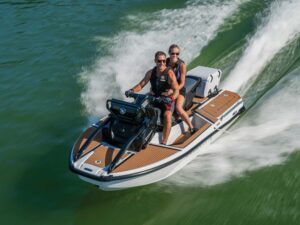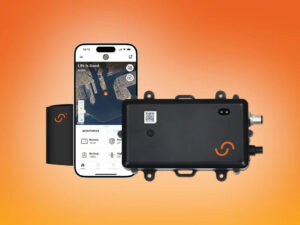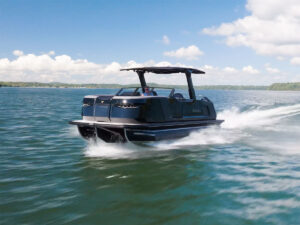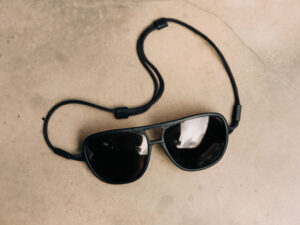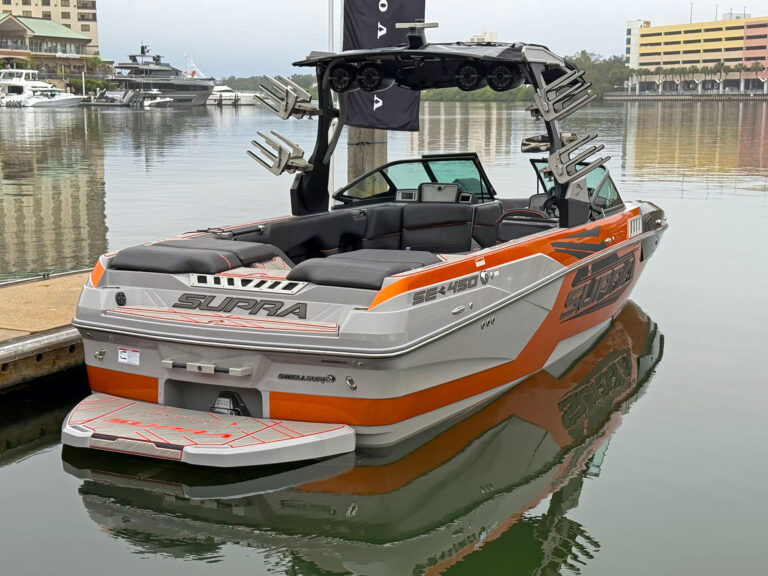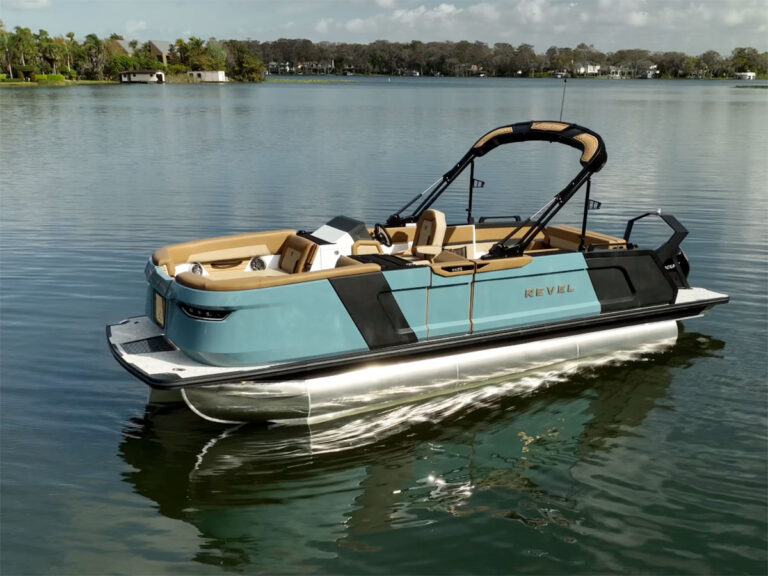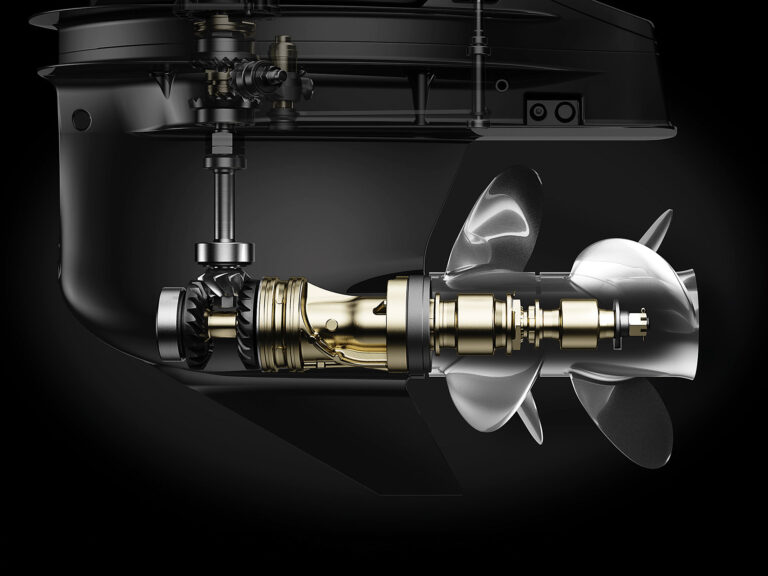
Despite climate change, winter can still bring freezing temperatures to much of the nation. Like inboards and sterndrives, outboard engines are also subject to potential damage from freezing and from being laid up in disuse for months at a time. So outboards demand winterizing too.
This project is simple enough to do yourself with the right tools, products and a bit of education. To serve as our example, we used a Yamaha F150 four-cylinder outboard.
The same principles apply to other four-stroke outboards, but check your owner’s manual for procedures that might be specific to your brand and model.
Whatever engine oil you choose, it should be labeled FC-W, which means it’s certified by the National Marine Manufacturers Association to contain additives that enhance lubrication and inhibit corrosion in marine applications.
Skill Level: 1/5 Finish Time: Approx. 3 hours per engine
Tools and Supplies
- Engine oil (4.8 quarts needed for a Yamaha F150)
- Oil filter (Yamaha part no. 69J-13440-0100)
- Filter wrench
- Fresh gaskets for drain and vent plugs
- Socket and Allen wrench sets (metric for Yamaha outboards)
- Needle-nose pliers (for removing/replacing cotter pin for prop)
- Oil-drain pan
- Gear lube (33.1 ounces needed for a Yamaha F150)
- Gear lube pump ($4.65, go2marine.com)
- Spin-on external 10-micron water-separating fuel-filter canister
- Portable 6-gallon fuel tank with fuel line ($99.99, overtons.com) and fresh gasoline
- Flush-muff device ($8.28, walmart.com)
- Sta-Bil Storage Fuel Stabilizer or Yamalube Fuel Stabilizer and Conditioner
- Yamalube Ring Free
- Yamalube EFI Fogging Oil
- Hand-pump grease gun
- YamaShield corrosion-inhibiting spray
- Cleanup rags

Check your owner’s manual to create a shopping list of what kinds of tools, filters, fluids, etc. (and how much of each) you will need for the winterization process. As a starting point, check out “Tools and Supplies” above. In making your list, multiply supplies such as engine oil, gear lube and filters by the number of outboards on your boat.
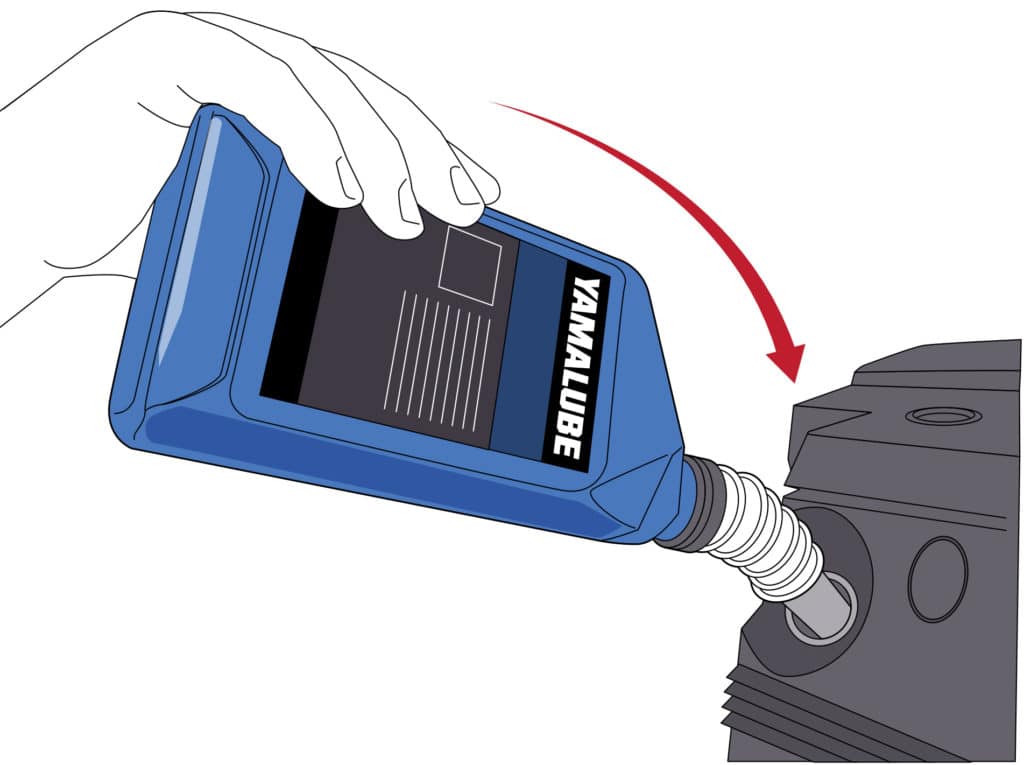
Change the Oil
Changing the engine oil and oil filter ensures that any accumulated contaminants and acids in the old oil cannot harm the engine while in storage. Try to use the same brand of oil as the outboard (e.g. Yamalube oil for Yamaha motors), as the engine company has a vested interest in making sure the engine performs well, especially while it’s under warranty.
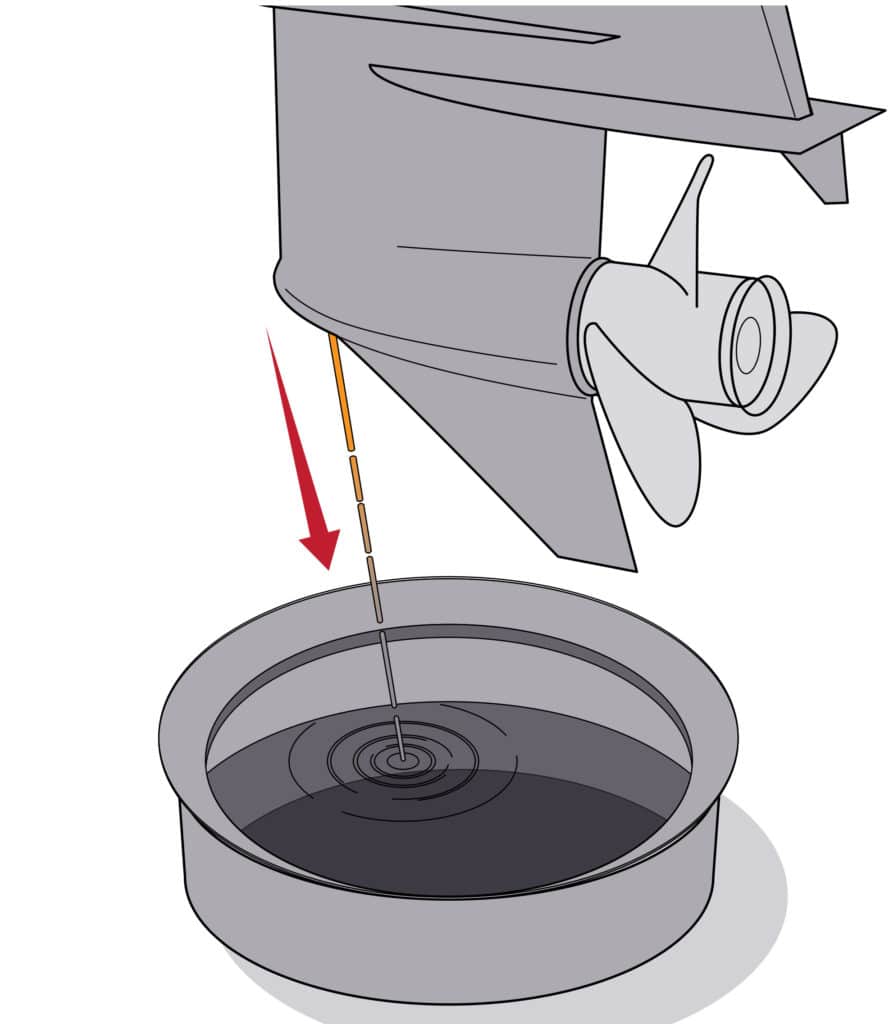
Replace the Gear Lube
Changing the lube for the gear case eliminates the chance that water in the lube might corrode lower-unit gears and bearings over the winter. It also ensures that you start the next season with fresh lube. If the used lube looks milky (an indication of water) or you find large particles of metal in the old lube (a sign of excessive wear), have a marine mechanic check out the gear case for possible repairs — the sooner, the better.

Replace the Fuel Filter
Replace the spin-on external 10-micron water-separating fuel-filter canister for your engine. (Don’t have a water-separating fuel filter? Get one installed now.) Having a brand-new water-separating fuel-filter canister will block any water that might accumulate in the fuel tank during winter storage. Check your owner’s manual for any other fuel filters on the motor that might need scheduled replacement.

Stabilize the Fuel
Opinions vary on how much gasoline to leave in the fuel tank during winter storage. Unless you have access to non-ethanol gas, we recommend running the tank as low as possible so that if the gas goes bad in storage, the less of it you will have to dispose of next spring. Treat the remaining fuel with a fuel stabilizer such as Yamalube Fuel Stabilizer and Conditioner or Sta-Bil Storage Fuel Stabilizer per the recommended dosage per gallon.

Fog the Engine
Yamaha recommends using a portable fuel tank with fresh gas treated with three Yamalube additives: Ring Free, EFI Fogging Oil, and Stabilizer and Conditioner. Follow the directions on the label for proper dosage. Connect the fuel line from the tank to the inlet of the water-separating fuel filter. Run the engine for 10 minutes using a flush-muff device to deliver cooling water. Afterward, reconnect the main fuel line to the water-separating fuel filter.
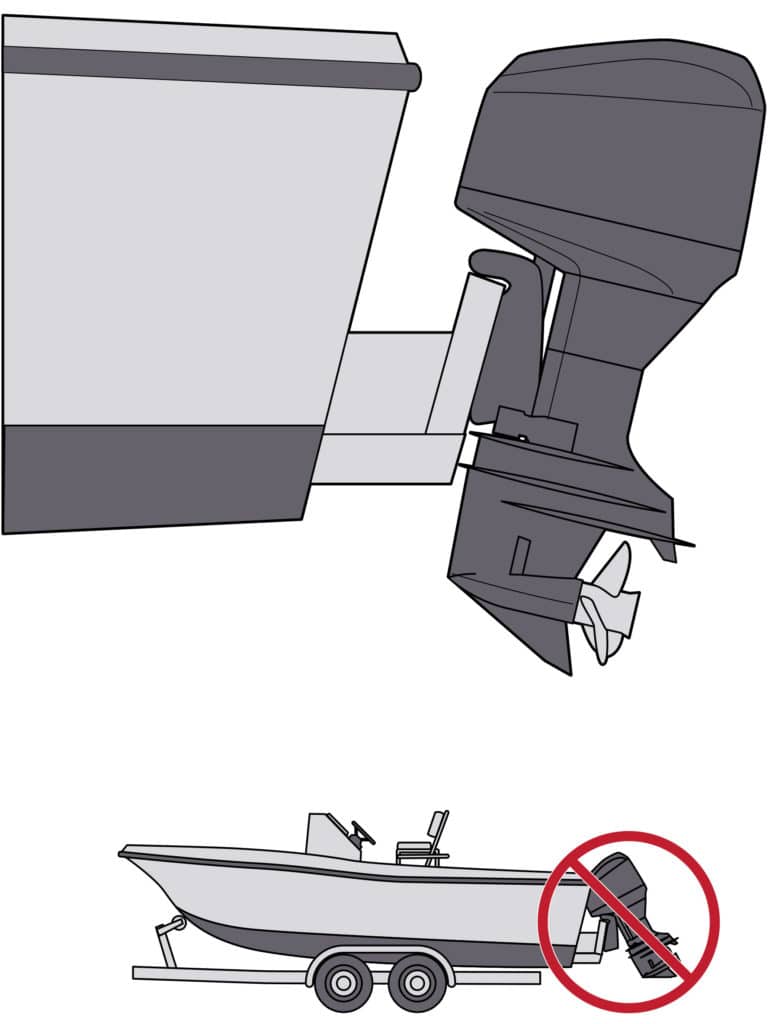
Keep It Down
After you have fogged the engine, remove the flush muff and trim in the engine fully to drain water from the cooling system, and keep it in this position over the winter to prevent rain-water from collecting (and possibly causing freeze damage) in the exhaust hub. Covering the lower unit with a large, heavy-duty plastic bag and duct tape will ensure that water doesn’t collect in the hub. Disconnect and remove the batteries for winter storage.
Grease Is the Word
As part of the winterizing routine, use a grease gun to pump fresh grease into all of the motor’s zerk fittings, including the ones on the steering column, steering slide (aka the tilt tube), and the shifting mechanism under the hood. Remove the propeller and hardware, and grease the prop shaft. Spray the powerhead with a corrosion inhibitor such as YamaShield to create a thin moisture barrier.

